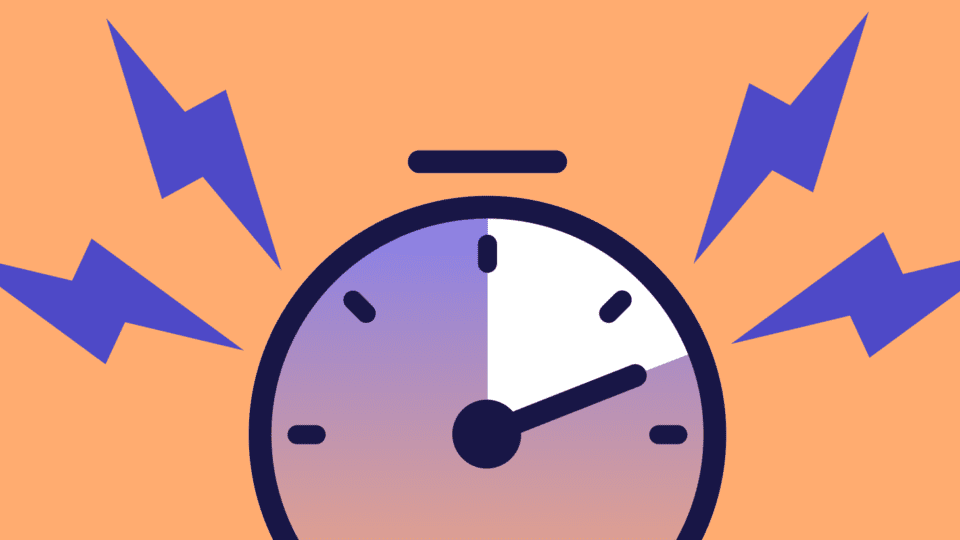Creative briefs are a must for any professional storyteller working on an assignment. To avoid miscommunication, and make sure the creative team – or person, depending on the size of the company – has understood what you want, writing a comprehensive brief is essential. Once you are on the same page, the project will be running smoothly, and the final product will live up to your expectations.
What is a creative brief?
Before we get into the details, let’s go over some of the basics. A creative brief is a document about 1-2 pages long that outlines the requirements and goals for a particular assignment. It could be for any creative project, from a huge global ad campaign to an instructional video about a product or simply a guide describing how to write a creative brief (yes, creative briefs also work splendidly to use for inhouse projects). A creative brief should be short, inspiring, and give creatives the opportunity to create great advertising. It should explain who you are reaching with what message, and what you want them to know, feel and do.
Download the Complete Checklist here!
Why is it important?
No freelancer is a mindreader. Whoever you hire for the project, whether it be a big creative agency or a single freelancer, is gonna do their very best to give you what you have ordered. But if you do not provide them with all the important information and goals you have for the project, you might not find the end result to be what you envisioned. The creative brief exists to make sure you and the freelancer are on the same page about what is expected and how to achieve it – and to avoid last-minute surprises.
Who Creates the Creative Brief & who is it for?
The person who does the creative task is nominally in charge of overseeing the client connection. This is typically the project or account manager.
This person works closely with the customer to comprehend their needs, their circumstances at the time, and what their goals are for the future. However, more than one person contributes to the creation of the innovative brief description. Typically, you need the opinions of a variety of people, including:
The creative team: to assess the viability of the client’s vision and to generate original ideas.
The marketing team: to gather customer data, analyze competitors and develop a viable media strategy.
The accounting team: to analyze budgets.

How to write a creative brief?
So, now that we know the what and the why, let’s get into the how. There are about as many different ways of writing creative briefs as there are creative agencies out there. But they all have a few essential elements in common.
1. Describe your company
No one knows your company and your brand as well as you do. With a short description of your company, you give the freelancer important background information that helps them understand your business. Include anything from company history, descriptions of products and services, your business model, and how you work. Keep it short and to the point though, there is no need for an essay.
Questions: What industry are you in? What products or services do you offer?
Example: PR and communications. We provide services helping our clients with their PR.
2. Define your target audience
A freelancer needs to know who you are trying to reach with your content. This can affect everything from the tone of voice to the medium itself. When identifying your target audience, you need to know what problem you are trying to solve and understand what you are delivering and who would benefit. Maybe your company has already created buyer personas. In which case – well done, add this to your brief and move on to the next step. But if you have not, or the persona does not apply to this particular campaign or piece, don’t worry, just take a moment to define your audience.
Questions: Who is your audience? Age, gender, interests, geographic area, etc.
Example: Our audience is smaller and medium-sized businesses, primarily in the Nordics and DACH, that need an effective PR platform.

3. Your brand persona
While this at first glance is somewhat connected to describing your company, your brand persona is actually quite different. For example, one single company can hold many different brands or even products, with very different personas. Take Coca-Cola for example. Would you personify The Original Coca-Cola the same way as Coca-Cola Zero? The same as Fanta or Sprite? Not really, since the products all have different brand personas. This is your way of personifying your brand, in a similar way you detail your target audience.
The tone of voice is an important part of who you are as a brand and something that sets you apart from your competitors. It is your brand’s unique expression and needs to be consistent. This is why it is important to describe your tone of voice to your freelancer. Feel free to add examples of it used in texts, for maximum understanding!
Questions: What is your brand persona? How would you like it to sound? What language style do you like to use? What is the purpose? What point of view should the writer use?
Example: Our brand persona is friendly, inspiring, and professional. Our tone of voice reflects this and is knowledgeable without being showy. Our goal is to inspire and educate our audience. We always write from a first-person point of view.
Download the Complete Checklist here!
4. Keywords and phrases for SEO
In the world of digital searches, freelance writers need to know which terms are relevant to their industry and their target audience. By listing them, the writer can then sprinkle those essential keywords in a story to get an organic reach. This is also a great place to add if you have a particular working title in mind for the finished piece!
Questions: What are your keywords? What is your target audience searching for?
Example: PR. Communications. Creative brief checklist. What is a creative brief? How to write a creative brief? Who needs a creative brief?
5. Your website and social channels
One of the best places for a freelancer to understand the look, feel and messaging you use is to link your website. If you have particular landing pages on your site that you feel goes well together with the project at hand, do not forget to let the freelancer know this. For many projects, it is also important to include your relevant social media channels. It is very common for companies to have different tonalities for different social platforms. For example, if you are ordering a series of entertaining TikTok videos from a freelancer, those might not be a suitable format for your LinkedIn page, where you have a more professional persona. Give your freelancer a better idea of where the content will be used, and you will get a better result.
Questions: What landing pages are relevant to your order? Which social channels (if any) are relevant?
Example: mynewsdesk.com, mynewsdesk.com/library, Facebook, Twitter, newsletter.

6. The type of project you are ordering
This is perhaps one of the most important questions in this guide, and where you and the freelancer really need to be on the same page. For many freelancers, this is an indication of how much time the project takes to complete, and therefore determines the pricing. Let’s take a look at a few examples of text projects and how long they usually are.
- Short blog post (350-450 words)
- Standard blog post (550-650 words)
- Long blog post (850-950 words)
- Press release (350-450 words)
- Infographic (250-350 words)
- Tweets (up to 280 characters)
- Facebook posts (1-2 sentences)
- Podcast (define scope)
- Video (define scope)
- Video script (define scope)
7. Purpose
This is where you write what you want to achieve with this project. Not only is this important for the freelancer to know, so they can steer the content in the right direction and add the right call to action at the end. It is also a very crucial part for you to know. Without a clearly defined goal, why even spend the time and money to produce a content piece? Content should not be a goal in itself but a tool to reach business goals. So spend some time on figuring out what your goal is.
Questions: What is the call to action? What do you want your audience to do or feel when reading your text or watching your video? Do you want to educate, inform, entertain or persuade them?
Example: The goal of this text is to guide the reader through the process. We want the reader to feel informed and inspired to create content of their own.
8. Special brand and style requirements
Add any other important information about your branding that the freelancer could need. Are there any particular words or topics you want to avoid? What competitors should you look out for? Do you have any specific ways you like to use to differentiate your brand?
Examples: Provide freelancer with the brand platform, visual identity, competitor analysis, USP.

9. Deadline
Alas, we have reached the last checkpoint, but that does not make it less important. In fact, many freelancers and creative agencies would agree that this is one of the most important parts of a creative brief. To be able to plan the work that needs to be done, the freelancer needs to know when you expect it to be delivered – and if it is even possible to achieve in the timeframe you ask for.
A good tip is to set a couple of deadlines for both parties. Deadlines for when you expect a first, second and final draft from the freelancer. But also deadlines for when you need to get back to the freelancer with your feedback, so they have adequate time to do changes before the final deadline. Because at the end of the day, it is in your self-interest to make sure that the project is not a last-minute scramble, but runs as smoothly as possible.
Do not forget to account for weekends and public holidays when setting your deadlines. For example, if you plan to release a blog post on December 27th, the final draft deadline should not be on December 26th, but on December 23rd.
Questions: When do you want the piece to be published? How much time does the freelancer need to do changes?
Examples of Creative Brief
So far we have gone through the most important factors that will make the difference between a creative brief and a well-written creative brief. So, what does it actually look like when applied? Here is a great example of a creative brief by Hush Puppies. As you can see the company has described the “what” of the project (its objectives) and “how” to achieve it (the creative approach). Even if the essentials are important when it comes to writing a creative brief, that does not necessarily mean that you can not go a bit outside the box. In this example by PayPal you can see that it eschews conventional sections and uses a bold visual design instead. Clearly, creative briefs are flexible in their content and design as long as they work for both the client and the creative team.
Download the Complete Checklist here!
Summary
To summarize, the creative brief should explain what the working group should do, but not how. Nor should it be a long-winded review of every detail of the campaign. Instead, it should delineate and summarize what it has been agreed that the campaign should focus on. The pointers in this article are just suggestions, of course the creative brief can be modified to suit your needs. You can add or remove anything you want, as long as your creative team can grasp it.
This might not be the most fun part of the campaign but it is essential to work more effectively and efficiently, and in the end you will most likely have the result that you initially wanted.



